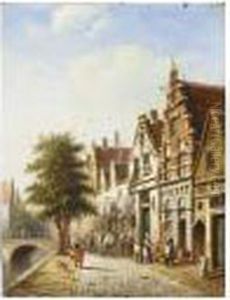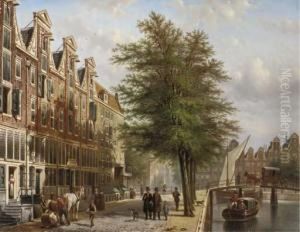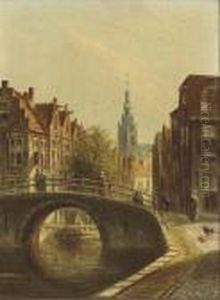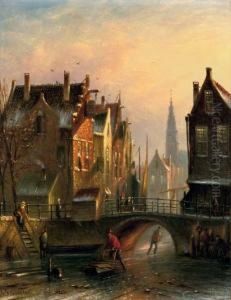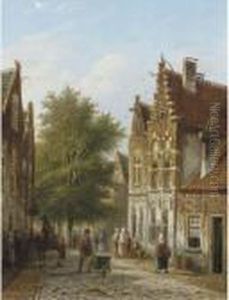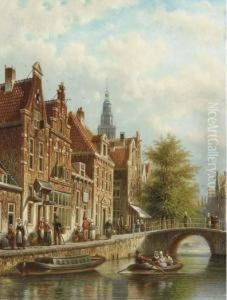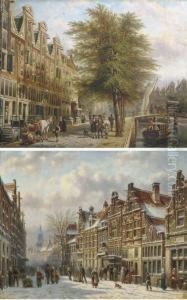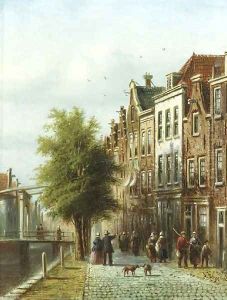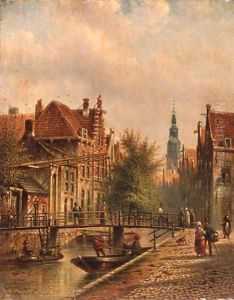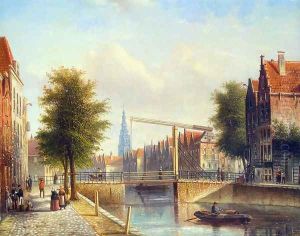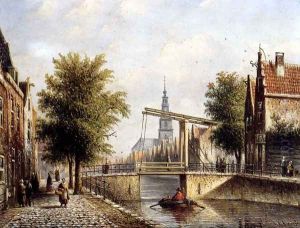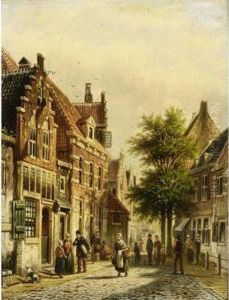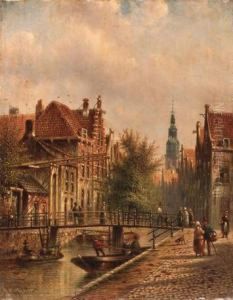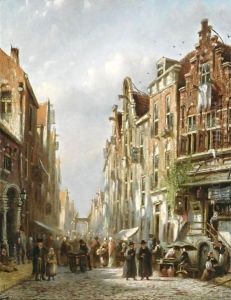Johannes Franciscus Spohler Paintings
Johannes Franciscus Spohler, also known as Jan or Johan Spohler, was a Dutch painter born on June 7, 1853, in Amsterdam, Netherlands. He hailed from a family of artists; his father, Jan Jacob Spohler, was also a painter, known for his landscapes and winter scenes, and his brother, Jacob Jan Coenraad Spohler, followed in their father's footsteps as a landscape artist. This artistic environment undoubtedly influenced Johannes Franciscus's career choice and development as an artist.
Johannes Franciscus Spohler was particularly renowned for his cityscapes and landscapes, often depicting Dutch towns and rural scenes. His works are characterized by a meticulous attention to detail and a keen sense of lighting and atmosphere. Spohler's paintings often feature waterways, such as canals and rivers, which reflect his Dutch heritage and the prevalent landscape of the Netherlands.
Spohler received his artistic training at the Academy of Fine Arts in Amsterdam, where he honed his skills under the tutelage of his father and other instructors. Throughout his career, he remained largely based in Amsterdam, although it is believed that he traveled around the Netherlands for inspiration and to capture the diverse sceneries the country offered.
His painting style is considered to be part of the Romantic tradition, with a touch of realism. He was adept at capturing the changing seasons in his landscapes, from the blooming tulip fields in spring to the ice-covered canals in winter. Spohler's works were well-received during his lifetime, and he exhibited his paintings in various venues, contributing to his reputation as a skilled landscape artist.
Johannes Franciscus Spohler's legacy lives on through his contributions to Dutch landscape painting. His works are found in private collections and museums, appreciated for their charm and historical value as depictions of 19th-century Dutch scenery. Spohler continued to paint throughout his life and passed away in 1923. His works continue to be admired for their beauty and craftsmanship, securing his place in the annals of Dutch art history.





